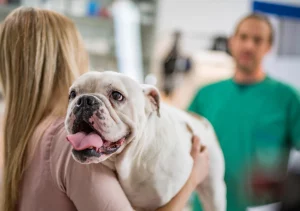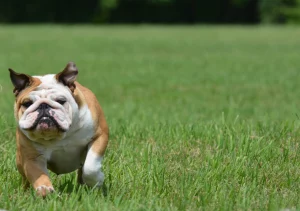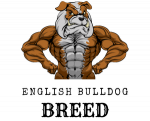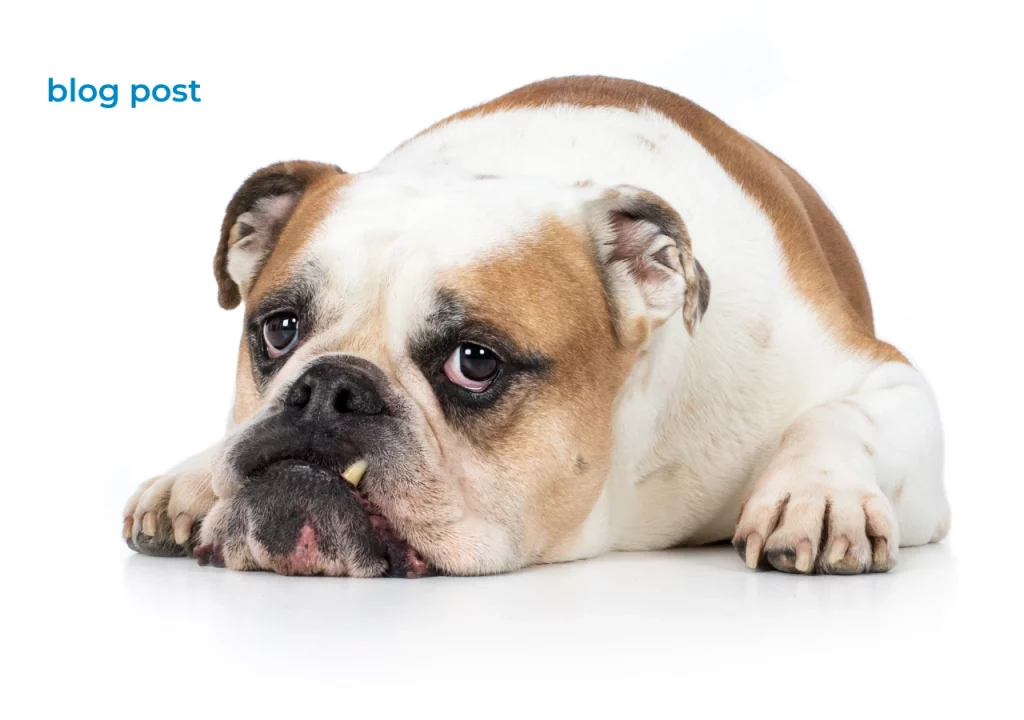English Bulldog Hip Dysplasia is a common health condition that affects many dogs in this breed. Here is all the info about what causes it and how you can help your bulldog get better:
Hip Dysplasia in English bulldogs is not an easy or harmless problem, so we give you a guide through this bulldog health issue: including its causes, symptoms, diagnosis, treatment options, and preventive measures! By understanding the complexities of hip dysplasia in English Bulldogs, owners can take proactive steps to manage the condition and improve the quality of life for their beloved doggo companions!
Are English bulldogs prone to Hip Dysplasia, and what is it?
Unfortunately, English Bulldogs are particularly prone to hip dysplasia, among other health problems. It’s like their hips got the short end of the stick in the genetic lottery. Studies have shown that a significant percentage of English Bulldogs are affected by this condition, making hip dysplasia a serious concern for owners and breeders of British bullies worldwide!

The main cause of hip dysplasia in English Bulldogs is their inherited predisposition to the condition. When breeding dogs with hip dysplasia, the likelihood of passing on this trait to their offspring increases. It’s crucial for breeders to prioritize the health of the parent dogs to reduce the risk of hip dysplasia in the next generation.
Hip dysplasia is a common orthopedic condition that affects the hip joints in dogs, including our adorable English Bulldogs. It occurs when the hip joint doesn’t develop properly, leading to instability and abnormal wear and tear. This can cause discomfort, pain, problems with walking and doing normal doggy activities. When the pain is severe, it can even lead to Bulldog behavioral problems and even aggressive outbursts!
English bulldog hip dysplasia – symptoms

Our bullies may not be able to talk, but they can certainly communicate when they are in discomfort. Some common signs to look out for in English bulldogs with hip dysplasia include:
- Difficulty getting up or lying down,
- Limping or favoring one leg,
- Decreased activity levels,
- Bunny hopping while walking,
- Even a noticeable grating sound coming from the hip area
- Whining and grouting while doing simple and common daily activities (getting up, walking, sitting..)
Symptoms of this problem are similar in other dog breeds, so hip dysplasia in French bulldogs or Dachshunds, for example, can have the same signs!
If you notice any of these symptoms in your stompy friend, it is a sign that your English bulldog has hind leg problems, and it’s best to take them to a vet for a proper diagnosis and treatment plan. Remember, though – don’t panic! With proper care and management, including maintaining a healthy weight and regular exercise tailored to their abilities, your English bulldog can still lead a happy and fulfilling life despite this condition.
Hip Dysplasia in English Bulldog – causes (How do I know if my Bulldog has Hip Dysplasia?)

When it comes to English bulldogs and hip dysplasia, there are a few causes you should be aware of:
- Firstly, genetics play a big role in this condition. Bulldogs are known to have a higher predisposition for hip dysplasia due to their breeding history.
- Other causes like obesity are very common since English bulldogs are prone to be overweight if they have a bad diet and little activity. Extra weight may not seem like a big deal, but for bulldogs’ hips and joints, it can be too much to handle!
- Rapid growth during puppyhood can also have a big effect on hip dysplasia in English bulldogs. Too fast bone and muscle growth has more bad effects than good sides!
- Over-exercise can also contribute to the development of hip problems. Bulldogs are generally not big fans of exercise and can easily become overheated and can start having breathing problems.
But how do you know if your bulldog has it? Well, keep an eye out for certain signs. If you notice your pup having trouble getting up or lying down, reluctance to exercise or play, lameness or stiffness after physical activity, or any changes in gait like bunny-hopping or swaying hips, then it’s time for a visit to the vet.
How do you treat Hip Dysplasia in English bulldogs?

When it comes to treating hip dysplasia, there are a few ways that you can consider treatment, but it is best to listen to the advice of your veterinarian!
Non-surgical hip dysplasia treatment
Surgery is not always the first resort for hip problems in bulldogs! Non-surgical approaches can be effective in managing pain and increasing mobility for English Bulldogs. This type of treatment often includes medication and physical exercise supervised by your veterinarian! Medications such as non-steroidal anti-inflammatory drugs and joint supplements can help relieve the discomfort and pain. Physical therapy and targeted exercises, under the guidance of experts, can help to strengthen muscles and improve joint function.
Surgical interventions for the treatment of hip displasia
In some cases, unfortunately, surgical intervention may be necessary to treat the symptoms of hip issues and improve your Bulldog’s quality of life. Procedures like total hip replacement or femoral head ostectomy can provide long-term relief by replacing or modifying the affected joint. These types of surgeries are not something that should be taken for granted, and you need to discuss all of the options with your veterinarian!
Since surgeries are quite complicated, your Bulldog may need some special care after the treatment. This may involve restricted activity, physical therapy sessions, and regular follow-up appointments to monitor their progress. With proper post-operative care and rehabilitation, your Bulldog can make a smoother recovery and get back to their playful and sassy nature very fast!
But how much can bulldog hip surgery cost? The price of this type of surgery can vary from 1,500 to 5,000 dollars. The price is often dictated by the severity of the hip problems, the complexity of the surgery, and other factors.
Hip dysplasia may be a challenge, but with the right support and treatment, English Bulldogs can still lead happy and comfortable lives. So, let’s keep those hips swinging and tails wagging!
English bulldog hip dysplasia and how to prevent it:

Here are some preventive measures and exercise guidelines to keep in mind:
- One of the best ways to support your English Bulldog’s hip health is by maintaining a healthy weight. So make sure to keep and eye on their diet plan!
- While exercise is important for keeping your English Bulldog fit, it’s very important to give them activities that are not too much for their hips!
- Avoid high-impact exercises like jumping or intense running! Instead, choose some low-impact exercises such as swimming or slow-paced walks that provide exercise without putting excessive strain on the joints. Also make sure that they have their rest in their favorite doggy bed!
- There are various supplemental measures that can help in providing English Bulldog’s joint health. Consider adding joint supplements to their diet, but before you start to give it to them, consult with your veterinarian and listen to their advice!
Prevention is always the best option, and with little care and extra effort, you can help your Bullie have healthy and strong hips and joints!
What if my English bulldog has hip dysplasia?
Dealing with hip dysplasia in your English Bulldog can be quite hard, but with the right care and support, you can help your wrinkly friends have a good life! Here are some tips that can help you and your bulldog with this hip problem:
Make your English Bulldog’s living environment as comfortable as possible. Provide soft and comfortable bed to cushion their joints! Make sure that they have an easy access to food, water, and potty areas. Consider installing ramps or stairs to help them climb some higher areas like furniture without putting extra strain on their hips.
To help your Bulldog’s mobility, you may need to consider assistive devices such as harnesses or slings. These tools can provide additional support and stability, making it easier for your dog to move around. Consult with your veterinarian or a professional dog therapist to determine the most suitable mobility aids for your English Bulldog’s needs.
Don’t forget about the affection and lots of love and patience since emotional support is equally important as a physical one!
With proper management and care, English Bulldogs with hip dysplasia can still lead fulfilling lives, and you can share many years and memories together!


Pingback: Male VS Female English Bulldogs: What Are The Key Differences?
Pingback: What Is a Black English Bulldog? 7 Things To Know
Pingback: Red English Bulldog: 5 Types Of These Red Beauties | English Bulldog Shop
Pingback: English Bulldog Growth Chart: Everything You Need To Know
Pingback: Are English bulldogs dangerous?